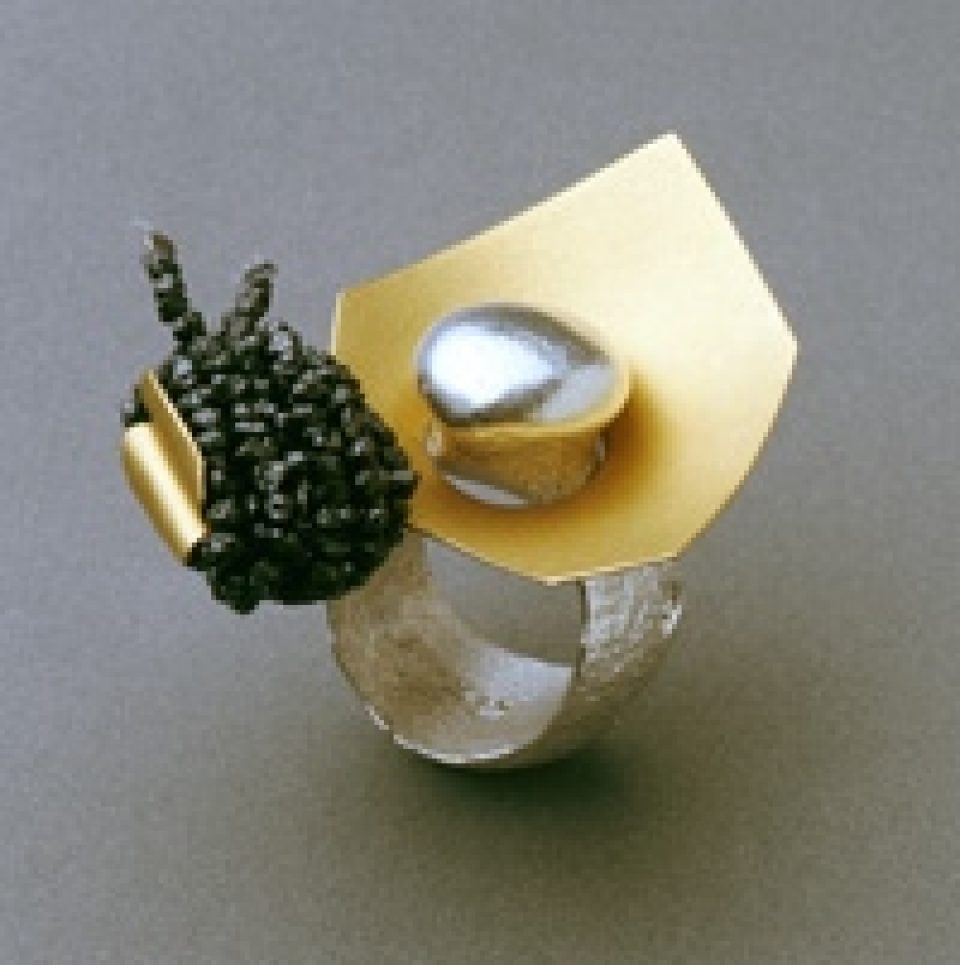16.10.2011
Johanna Dahm

The Swiss-born Johanna Dahm active since the 1970s, has continually pursued new ways of defining what jewellery can be. Her work is characterized by an investigative and open approach, which has led her everywhere from quests for the integration of fabric and brooch, exploring light reflections on the body, to researching exotic jewellery techniques.
Her work has explored many key practical and conceptual themes in jewellery. Dahm’s work is of the highest standard, and her intellectual understanding of both technique and creative process is one which she is able to articulate eloquently.
In 1997, Johanna Dahm lived and worked in Ghana with the Asante goldsmith, Nana Poku Amponsah, who was the only practitioner under licence from the late King Otumfuo Opoku Ware III. It was a rare privilege to be apprenticed to him. In their unique lost-wax casting technique she made her own work there, establishing that she was not copying, but learning, by closely observing and working alongside the master. On return to Switzerland, Dahm produced a collection of hollow cast rings. This research was published in a book Lost and Found, The Asante Trail to Rings.
Having discovered that this closed-cycle casting technique was also and only practiced by the Dokra casters in East India, she travelled in 2003-2004 to Orissa, to work alongside these craftspeople. There the language of materials and processes were particularly important as the casters are illiterate and do not speak English. Dahm has an extensive collection of photographs and her written notes documenting this experience as well as issues of gender, privilege, skills and values have carefully been evaluated in her second book same same, but different, The Dokra Trail to Rings. Again on return to Switzerland, Dahm developed her own version of this casting technique, naming it fast ASHANTI. She skips the wax model and forms a cavity directly in the soft clay, a negative form, into which the molten metal later flows.
Her latest rings show a playful combination of cast “rejects”, threaded rough diamonds, gold wire and sheet, sometimes including “Clay”, a high-tech kneadable metal.
There is great interest also shown by museums and educational institutions worldwide. Johanna Dahm has had numerous invitations to lecture and run workshops exploring this unique casting technique. From 1990 until 2005 she was professor at the Pforzheim University – Department of Jewellery.
You might find this interesting too:
- PaginaRead more...
With kids
- ExhibitionRead more...
Object Stories
A Look at the Collection
- ExhibitionRead more...
The Desk
- ExhibitionRead more...
Home Stories
100 Years, 20 Visionary Interiors